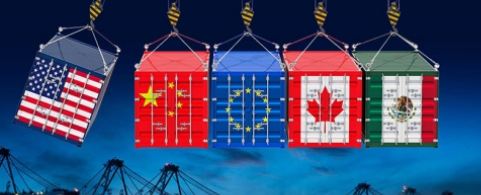Lutnick Says U.S. Nears Reaching 10 Major Trade Deals
U.S. Commerce Secretary Lutnick revealed on the 26th that the White House plans to soon reach agreements with 10 major trading partners. Although Lutnick did not specify which countries or regions are

U.S. Commerce Secretary Lutnick revealed on the 26th that the White House plans to soon reach agreements with 10 major trading partners. Although Lutnick did not specify which countries or regions are included in the first batch of trade agreements, earlier that day, U.S. President Trump stated that the United States is close to reaching a deal with India.
Stimulated by this news, European and U.S. stock markets collectively surged. On June 27, European stock markets opened higher and continued to rise: Sweden's OMX All-Share Index and Denmark's OMX20 Index had gained over 1.5%, while Germany's DAX30 Index, Europe's Stoxx 50 Index, France's CAC40 Index, and Switzerland's SMI Index all rose more than 1%. U.S. stock index futures also saw across-the-board gains, with Nasdaq futures up 0.29%, Dow futures up 0.32%, and S&P 500 futures up 0.25%.
10 Trade Agreements to Be Finalized Soon
Lutnick revealed that Trump is also preparing to finalize a series of trade agreements within the next two weeks to coincide with the upcoming expiration of the 90-day grace period for "reciprocal tariffs." Lutnick added that major trading partners will be "categorized" by July 9. Trump may also extend the deadline to allow for further negotiations.
Lutnick said, “We’re going to do top 10 deals, put them in the right category, and then these other countries will fit behind.”
Additionally, White House Press Secretary Levitt stated at a press conference on the 26th that the suspension period for the "reciprocal tariffs" set to expire by July 9 may be extended. Levitt said, "It may be extended, but that is up to the president." U.S. Treasury Secretary Besant had previously also indicated the possibility of an extension, noting that negotiations are ongoing with 18 key countries or regions.
Notably, Trump said on the 26th that he may soon sign a "very big" trade agreement that would open India's market to U.S. businesses. Negotiating teams from both sides are meeting in Washington to break the recent deadlock on key issues.
Speaking at an event at the White House that day, Trump said, "We are making some great deals. There’s one that’s going to come out very soon, probably with India, a very big one, so we’ll open up India."
Despite key differences remaining between the U.S. and India, Trump's remarks added a note of optimism to the possibility of an interim trade agreement. The "reciprocal tariffs" imposed by Trump on goods from trading partners are set to take effect on July 9, and an early agreement would help New Delhi avoid these additional tariffs.
According to foreign media reports, informed sources revealed that a team of Indian trade officials led by Chief Negotiator Rajesh Agarwal is scheduled to hold two days of talks with Washington officials this week to resolve differences and find common ground.
EU Receives Latest U.S. Trade Proposal
According to Reuters, European Commission President Ursula von der Leyen stated on the 26th that the EU has received the latest proposal from the U.S. for tariff negotiations but did not disclose Washington's specific demands.
Von der Leyen said, "Our message today is clear. We are ready for a deal. At the same time, we are preparing for the possibility that no satisfactory agreement is reached. The EU would defend the European interest as needed."
The current dilemma for national leaders and the European Commission is whether to accept an asymmetric trade agreement with the U.S. or risk escalating tensions and provoking Trump by retaliating.
At the summit held in Brussels on Thursday, several member states opposed retaliatory measures. According to reports, two sources familiar with the discussions revealed that most member states expressed a preference for reaching a quick agreement with the U.S. rather than waiting for a perfect deal, even if it means many of Trump's tariffs remain in place.
The EU needs to reach an agreement with Trump by July 9; otherwise, tariffs on nearly all EU exports to the U.S. will rise to 50%. Trump has repeatedly stated that the EU enjoys a trade surplus with the U.S. while maintaining significant barriers against U.S. goods, taking advantage of the U.S.
Reports indicate that the core challenges in the current EU-U.S. negotiations revolve around market access and regulations in key industries. Both sides are engaged in detailed discussions on tariffs and non-tariff barriers, strategic procurement, and regulatory issues. However, Bloomberg previously reported that the demands put forward by the U.S. are seen by EU officials as unbalanced and requiring unilateral concessions, particularly in sectors such as steel and aluminum, automobiles, pharmaceuticals, semiconductors, and civil aircraft, where negotiations are exceptionally difficult.
EU officials still hope that, even if a full agreement cannot be reached by July 9, both sides can at least agree on principles to continue negotiations beyond the deadline.
Disclaimer: The views in this article are from the original Creator and do not represent the views or position of Hawk Insight. The content of the article is for reference, communication and learning only, and does not constitute investment advice. If it involves copyright issues, please contact us for deletion.